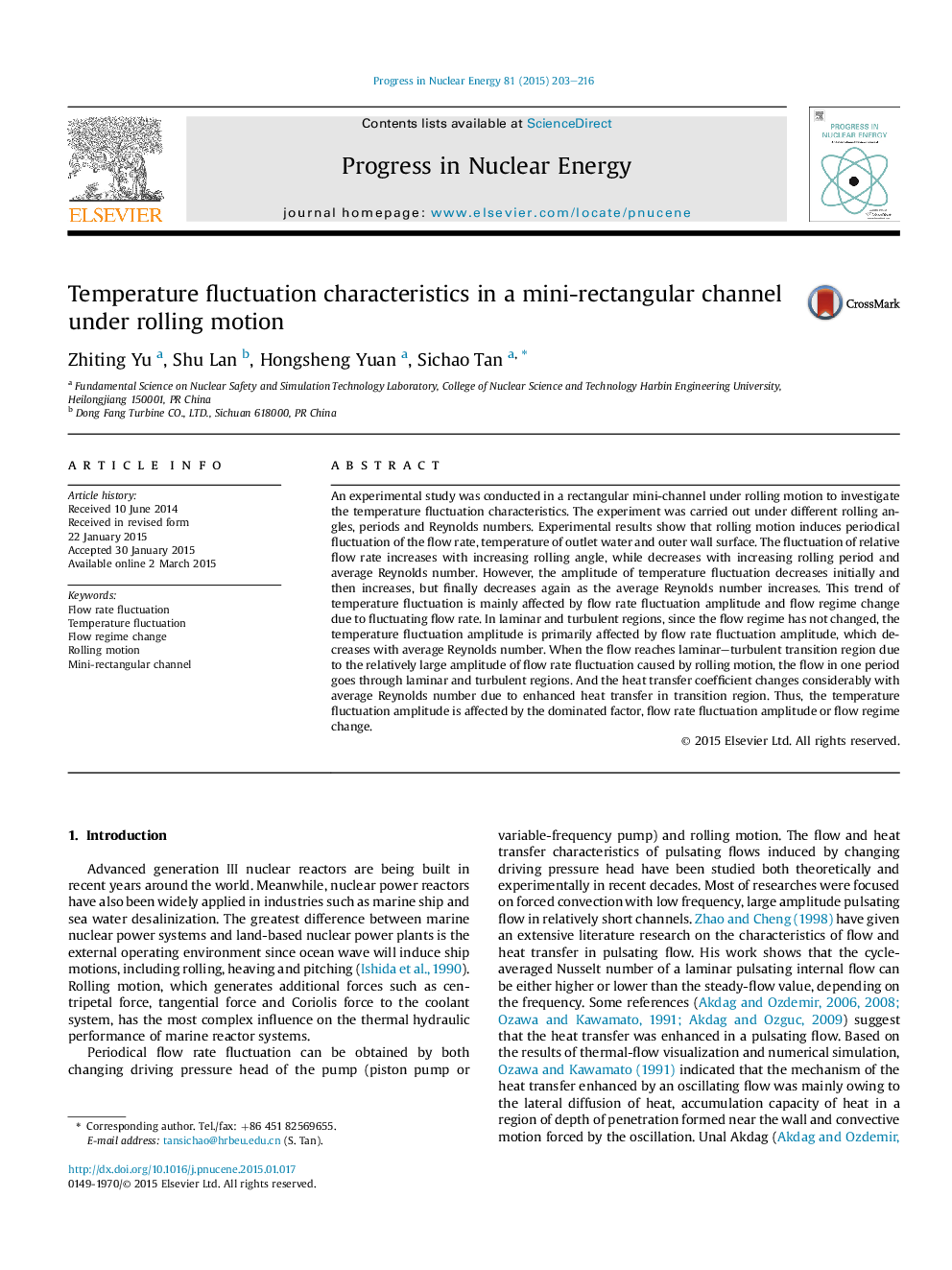| Article ID | Journal | Published Year | Pages | File Type |
|---|---|---|---|---|
| 8085444 | Progress in Nuclear Energy | 2015 | 14 Pages |
Abstract
An experimental study was conducted in a rectangular mini-channel under rolling motion to investigate the temperature fluctuation characteristics. The experiment was carried out under different rolling angles, periods and Reynolds numbers. Experimental results show that rolling motion induces periodical fluctuation of the flow rate, temperature of outlet water and outer wall surface. The fluctuation of relative flow rate increases with increasing rolling angle, while decreases with increasing rolling period and average Reynolds number. However, the amplitude of temperature fluctuation decreases initially and then increases, but finally decreases again as the average Reynolds number increases. This trend of temperature fluctuation is mainly affected by flow rate fluctuation amplitude and flow regime change due to fluctuating flow rate. In laminar and turbulent regions, since the flow regime has not changed, the temperature fluctuation amplitude is primarily affected by flow rate fluctuation amplitude, which decreases with average Reynolds number. When the flow reaches laminar-turbulent transition region due to the relatively large amplitude of flow rate fluctuation caused by rolling motion, the flow in one period goes through laminar and turbulent regions. And the heat transfer coefficient changes considerably with average Reynolds number due to enhanced heat transfer in transition region. Thus, the temperature fluctuation amplitude is affected by the dominated factor, flow rate fluctuation amplitude or flow regime change.
Related Topics
Physical Sciences and Engineering
Energy
Energy Engineering and Power Technology
Authors
Zhiting Yu, Shu Lan, Hongsheng Yuan, Sichao Tan,
